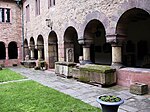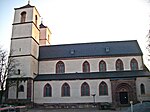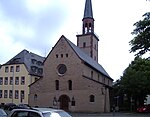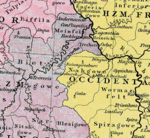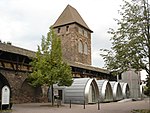Jewish Cemetery, Worms

The Jewish Cemetery in Worms or Heiliger Sand, in Worms, Germany, is usually called the oldest surviving Jewish cemetery in Europe, although the Jewish burials in the Jewish sections of the Roman catacombs predate it by a millennium. The Jewish community of Worms was established by the early eleventh century, and the oldest tombstone still legible dates from 1058/59. The cemetery was closed in 1911, when a new cemetery was inaugurated. Some family burials continued until the late 1930s. The older part still contains about 1,300 tombstones, while the newer part (on the wall of the former city fortifications, acquired after 1689) contains more than 1,200. The cemetery is protected and cared for by the city of Worms, the Jewish community of Mainz-Worms, and the Landesdenkmalamt of Rhineland-Palatinate. The Salomon L. Steinheim-Institute for German-Jewish History at the University of Duisburg-Essen has been documenting and researching the site since 2005. Because of its cultural importance and preservation, the Jewish Cemetery (along with other medieval Jewish sites in Worms, Speyer, and Mainz) was inscribed on the UNESCO World Heritage List in 2021.
Excerpt from the Wikipedia article Jewish Cemetery, Worms (License: CC BY-SA 3.0, Authors, Images).Jewish Cemetery, Worms
Willy-Brandt-Ring,
Geographical coordinates (GPS) Address External links Nearby Places Show on map
Geographical coordinates (GPS)
| Latitude | Longitude |
|---|---|
| N 49.629722222222 ° | E 8.3555555555556 ° |
Address
Alter Jüdischer Friedhof „Heiliger Sand“ (Heiliger Sand)
Willy-Brandt-Ring
67547 , Worms-Zentrum (Innenstadt)
Rhineland-Palatinate, Germany
Open on Google Maps
